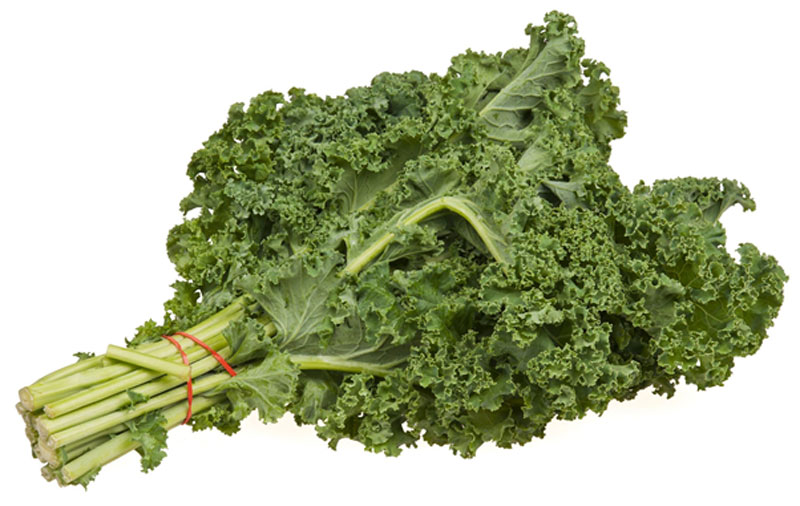 From smoothies to salad bars, kale seems to be everywhere these days. The ultra-healthy leafy vegetable is a type of cabbage (brassica oleracea), however, unlike a regular cabbage, it does not have a head. Dating back to 2,000 BC, when it was cultivated for food in the eastern Mediterranean and Asia Minor, kale made an appearance in Europe in the 14th century England. It was not until the 19th century that kale was brought to the United States, where it was mainly used as decoration until the 1990s.
From smoothies to salad bars, kale seems to be everywhere these days. The ultra-healthy leafy vegetable is a type of cabbage (brassica oleracea), however, unlike a regular cabbage, it does not have a head. Dating back to 2,000 BC, when it was cultivated for food in the eastern Mediterranean and Asia Minor, kale made an appearance in Europe in the 14th century England. It was not until the 19th century that kale was brought to the United States, where it was mainly used as decoration until the 1990s.
Plant Description
Kale comes in a range of varieties depending on the color and type of the leaves, and height of the stem—all reflecting its international flavor. Here are just some of the most common varieties of this cruciferous: curly-leaf kale (also known as Scots kale), bumpy-leaf kale (also known as Tuscan cabbage) and plain-leaf kale (also known as Russian kale). There is also feathery-leaf kale, which is a cross between curly- and plain-leaf kale. Ornamental kale has tougher leaves that are non-edible.
Health Benefits of Kale
- Kale is one of the most nutrient-dense vegetables in the world.
- Kale has very little fat, most of which comes in the form of omega-3 fatty acids.
- Kale is infused with powerful antioxidants, which counteract the damage done by free radicals to the body.
- Kale has been credited with lowering blood pressure, as well as anti-inflammatory, anti-viral and anti-cancer properties.
- Kale has a 4.5 times higher content of vitamin C than spinach.
- Kale is good for the heart, as it reduces cholesterol
- One cup of raw Kale contains around seven times the recommended daily amount of vitamin K, a nutrient responsible for blood clotting.
- Kale contains a lot of beta-carotene, an antioxidant that is converted by the body into vitamin A.
- Kale contains minerals such as magnesium, calcium and potassium.
Culinary Uses
- Raw kale leaves can be used in salads. The earthy aftertaste of the vegetable goes particularly well with sweeter flavors.
- Steamed kale can be used as a tasty side dish to meat or fish.
- Add kale to scrambled eggs or hash browns for a nutritious breakfast.
- Toss kale in olive oil infused with garlic and salt, and bake for a tasty snack.
- Add kale to a stir fry, noodles, or rice for an Asian-inspired meal.
For a more unusual take on kale, try making stamppot, a hearty Dutch dish bound to be a hit on cooler nights. “Made with mashed potatoes and a variety of vegetables, stamppot has been a healthy favorite with the Dutch for generations. Of course – Dutch food being generally on the heavier side – some also add sausage and gravy into the mix, which can make the dish more questionable in terms of how good it is for oneself,” says health expert Hendrik Jakker from adviesjagers.nl
Other Facts
- Kale is a cruciferous vegetable, which puts it in the same family as broccoli, cabbage, cauliflower and Brussels sprouts.
- Unlike some other greens, such as spinach, kale is low in oxalate, a substance that can negatively affect mineral absorption.
- Kyle comes in a variety of colors including green, purple, white and bluish green.
References
https://www.healthline.com/nutrition/10-proven-benefits-of-kale#section3
https://www.escoffieronline.com/5-ways-to-use-kale/
https://en.wikipedia.org/wiki/Kale
https://www.webmd.com/diet/features/7-fun-facts-about-kale#1

